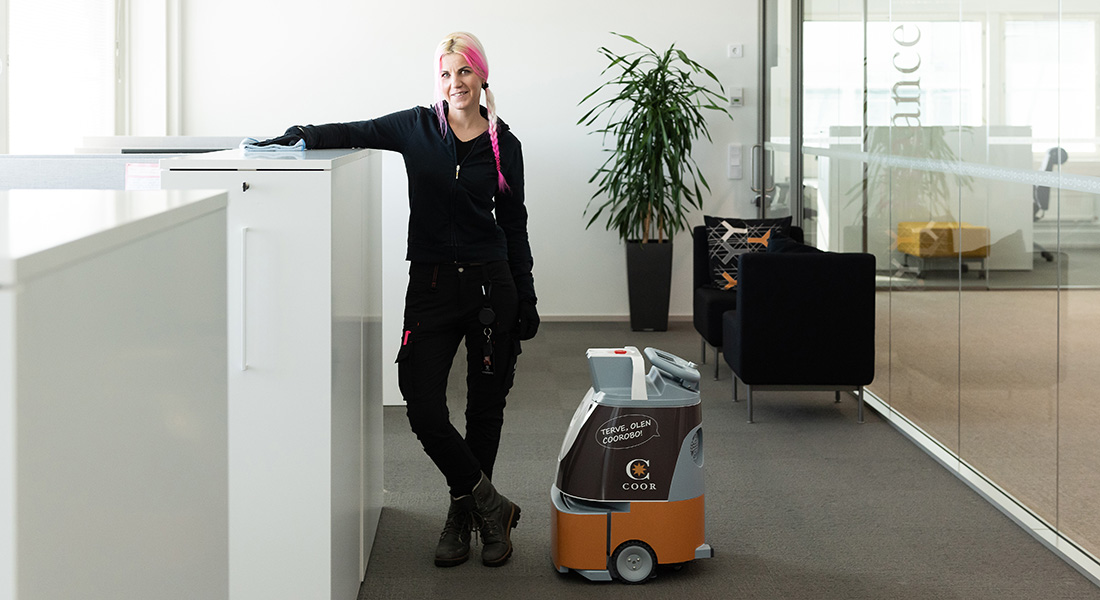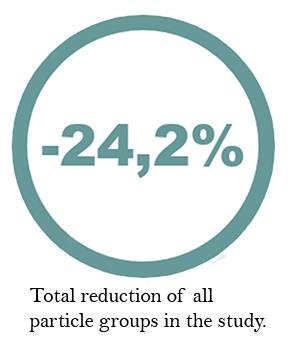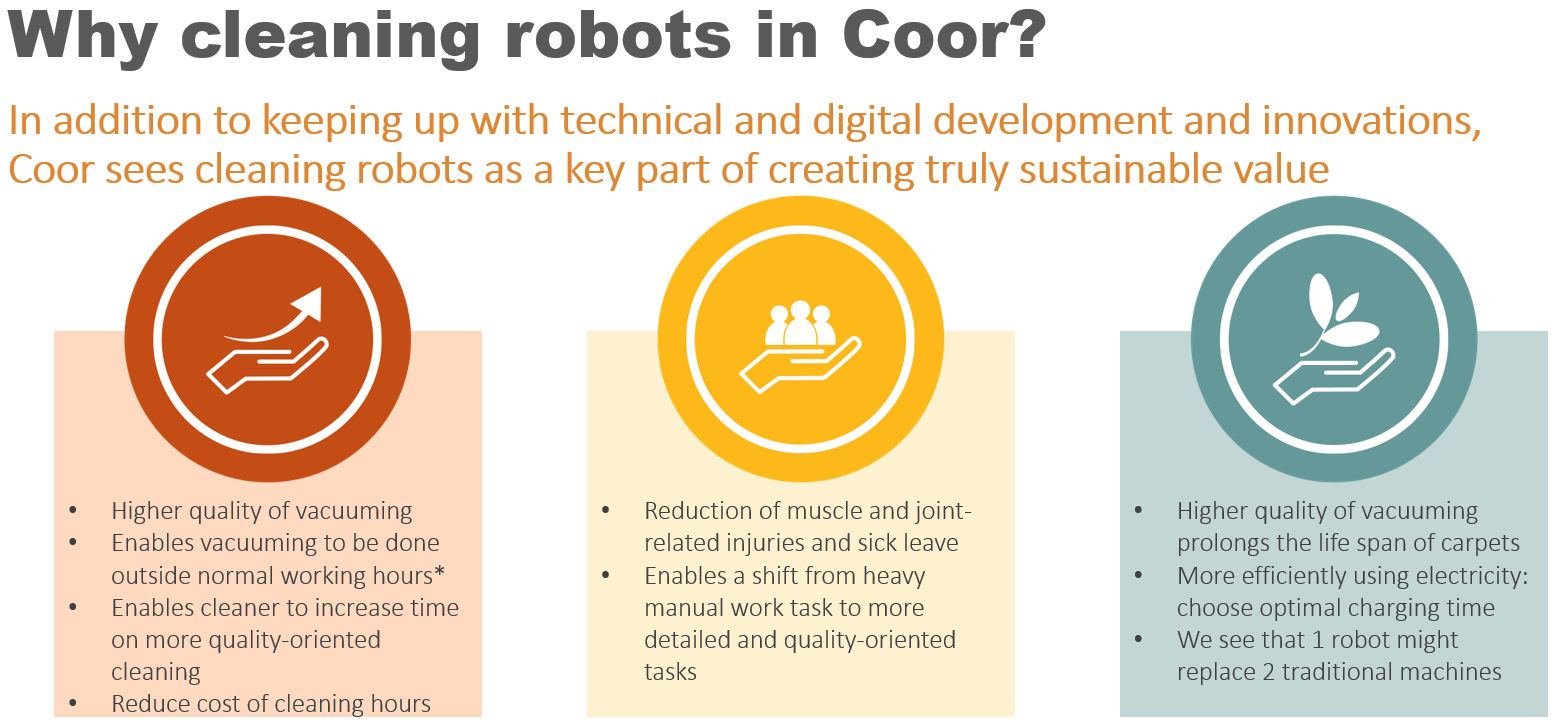Rise of robots in the cleaning industry
Digitalization and robotics are making a strong contribution to a more sustainable cleaning industry, benefiting cleaners, people using the premises as well as cleaning companies.
Digitalization and robotics are making a strong contribution to a more sustainable cleaning industry, benefiting cleaners, people using the premises as well as cleaning companies.

Even if Coor and other larger companies have been testing robots for several years, the robots have yet to take over larger part of the cleaning industry. However, this is about to change as digitalization and robotics affect the job description of cleaners and make it more meaningful and ergonomic.
The cleaning robots in use today are collaborative robots, or cobots, that work in parallel with humans. The cleaning area is programmed for the cleaning robot, and the human cleaner can simultaneously perform other tasks, such as vacuuming more difficult places or wiping tabletops, either in the same space as the robot or even on a different floor. The cleaner will get alerts on their digital device when the robot has completed a designated area, the dust bag is full, or the robot has run into problems.
Coor introduced a robot vacuum cleaner in a school in the Joensuu in Finland area last autumn, and the customer has been very satisfied with it. According to the headmaster of the school, the indoor air has become cleaner, as the robot removes more abundant dust generated in the school environment. The pupils have been excited about the new employee, and they’ve been shown where the robot’s eyes are and how it blinks when it turns.
- I have also promised to visit the classrooms with the robot at the stage when the teaching is about robotics, says Tuija Puustinen, Coor's service manager for the Joensuu region.
Tuija Puustinen says the entire cleaning team is very pleased with the entry of the cleaning robot into the work team:
- Vacuuming is a heavy task for cleaners and puts a particular strain on your arms and back. With the help of cleaning robots, the number of sick leaves of cleaners have decreased.
The results from using cleaning robots are better than that performed by humans. According to a study by the importer of cleaning robots, OrboTech, an average of 48% of a floor area is left unvacuumed when vacuuming manually, while 46% of the floor will be vacuumed twice. Efficiency also has an impact on air quality: according to a study conducted at the premises of a Finnish customer in cooperation with the robot manufacturer, importer and Coor, the air quality improved by 24% with the introduction of robot vacuum cleaners. Indoor air quality is crucial for the well-being as well as productivity of those working on the premises.
humans. According to a study by the importer of cleaning robots, OrboTech, an average of 48% of a floor area is left unvacuumed when vacuuming manually, while 46% of the floor will be vacuumed twice. Efficiency also has an impact on air quality: according to a study conducted at the premises of a Finnish customer in cooperation with the robot manufacturer, importer and Coor, the air quality improved by 24% with the introduction of robot vacuum cleaners. Indoor air quality is crucial for the well-being as well as productivity of those working on the premises.
Joonas Karjalainen, who works at Coor in Finland's development unit, is a firm believer that in the future more and more independent devices will be seen in the industry: robot vacuum cleaners and robotic floor scrubbers that are suitable for cleaning hard floor materials.
- In addition to improving air quality and the ergonomics of cleaners, cleaning robots continuously collect data while working; based on a report generated by the cleaning robots, it is possible to track which areas have been vacuumed at any given time and how much time has elapsed. With the help of the reports, we can ensure that we use our robots in the most efficient way possible, says Joonas Karjalainen.
There is an acute shortage of labour in the cleaning industry in most parts of the Nordics, and according to Tuija Puustinen and Joonas Karjalainen, digitalisation and robotics in the cleaning industry may also have a positive effect on the availability of work force.
- Cleaning robots do not replace human labour, but they have an impact on the image of the cleaning industry, and new methods can be used to attract young people to the industry. When the physical strain and workload decreases, the cleaners will also be able to stay in this type of work throughout their entire work life, Tuija Puustinen says.
Learn more about Coor's strive to become truly sustainable